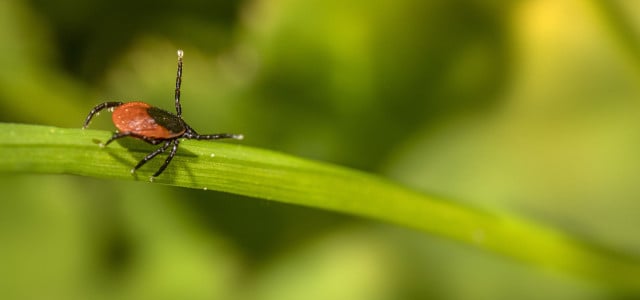
During tick season, you should be extra careful in some places and take precautions to avoid a bite. Here you can find out what you need to consider when and where.
A tick bite usually doesn’t hurt. However, the tiny animals can transmit numerous infectious diseases. According to the RKI, the most common diseases transmitted by ticks in Germany are borreliosis and tick-borne encephalitis (TBE).
You should therefore exercise caution in certain areas during the tick season to minimize the risk of infection.
When is tick time?
Tick bites are particularly common in summer. After all, people are more often in nature and are a popular destination for the small animals when walking in the forest and through tall grass. But ticks are not only active in the hot season. As soon as the temperatures are at least seven degrees on several consecutive days, ticks can also start looking for prey.
In winter or at long-term temperatures below seven degrees Celsius, ticks fall into one species hibernation. Exactly when it is tick time can vary slightly from year to year. In general, however, you should expect the small animals from February to October.
Tick season: You should pay attention to this

(Photo: CC0 / Pixabay / JerzyGorecki)
During the tick season, you can take a few simple precautions to protect yourself from a bite and thus a possible infection:
- Especially if you spend a lot of time in the forest, in high grass and in untouched nature, you should wear clothes that are as long as possible. In summer, you can use textiles that are as thin and light-colored as possible.
- Wear sturdy, closed-toe shoes.
- Use special sprays to keep ticks away (e.g. via** Avocado store). Note, however, that a spray is no guarantee against tick bites, it only reduces the risk.
- Check every time you are in nature during tick season, or ask someone else to check you on your back as well. This allows you to identify and remove a tick as quickly as possible – ideally before it has bitten you. According to the RKI, particularly popular bite points for ticks include the hairline, ears, neck, armpits, navel or genital area.
- To properly remove the tick, you should pull it completely out of the skin. It is best to use special tick tweezers for this. Grab the tick by its mouthparts as close to the skin as possible and pull it out slowly and straight, evenly. Avoid grabbing the tick by the body. Then there is a risk that it will burst, so to speak, and its fluids will be distributed in the wound.
- Then disinfect the wound and keep an eye on the puncture site for a few days to weeks. If redness develops around the area, you should seek medical advice immediately. According to the RKI, this may be an indication that you have contracted Lyme disease. With TBE, fever occurs one to two weeks after the tick bite, fatigue, headache and other flu-like symptoms. If you notice these symptoms, you should also immediately go to a doctor’s office or inform the medical on-call service.